Zig Rigs. Loved and loathed in equal measure, this rig is much more than just that. It’s a complete method, a whole way of fishing and an incredibly effective one too. Most carp angling involves fishing either on or very near the lake bed. Whether it’s bottom baits, wafters or pop-ups we are presenting our baits on the deck as that is where we believe they will be fed upon by our quarry. Floater fishing, on the other hand, is the polar opposite. Here we are trying to catch carp and encouraging them to feed on the water’s surface.
Carp spending the majority of their time in mid water
Carp don’t often swim around dragging their bellies in the silt nor do they always have their backs out so it’s fair to conclude that they spend a good proportion of their time somewhere in between. Fishing at the extremes, on the lake bed and on the surface leaves the vast majority of the water column untouched and untapped, so how can we exploit this? The answer of course is by using a Zig Rig.

Zig rig fishing for carp in the upper layers of the water
Zig Rigs small hookbaits which imitate a hatch or other insect work well
Now, however the Zig Rig is set up, there is one common feature in every incarnation, a buoyant hook bait that sits somewhere above the lake bed. Occasionally this could be a whole pop-up, more likely a trimmed one, a purpose-made Zig hookbait or, most commonly, a little piece of coloured foam. Whilst whole boilies in mid-water can produce bites it’s usually best to offer something on a miniature scale that might imitate an insect or other small water creature.
Smaller hooks are required with a smaller hookbait
A small hookbait will require a small hook, especially considering it has to hold up the entire length of your look link, which might be up to 12ft long. This could be as big as a size 8 but, for the most part we’re talking size 10 or even size 12 hooks to provide the lack of weight and subtlety required. The pattern of hook can be one of your choice although a lighter-weight one is generally most appropriate for zig rigs. Small hooks, and light lines mean we aren’t likely to be bending the rod to its full test curve and putting huge amounts of pressure on the fish so there is no real need for one manufactured from heavy-duty wire. Many anglers have concerns with regard to the strength of small hooks although these are mostly unfounded. Yes, the wire gauge gets thinner as hook size drops but so does the gape and hence the amount of leverage or strain that’s exerted on the bend. In short, each size of hook and any given pattern should possess similar strength.
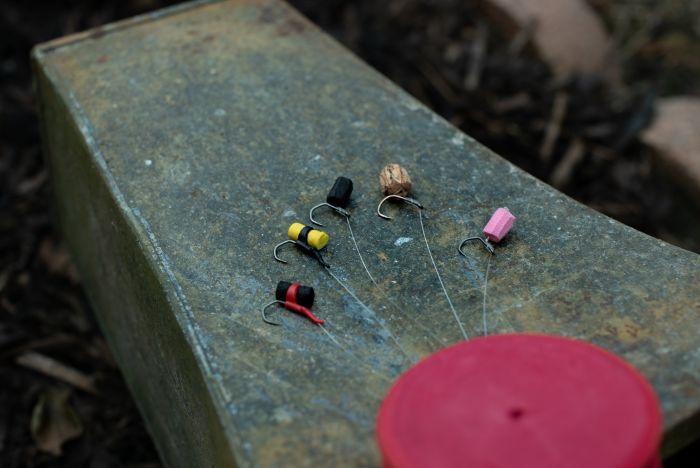
Small pieces of foam imitate insect and fly hatches
Consider the style of the eye for the hook pattern
One thing to bear in mind when choosing your hook pattern is the style of the eye. We’re going to be using a nylon hook length, which, even in lower diameters, harbours some inherent stiffness. This slight rigidity can work against us if using a hook with a downturned eye in combination with a knotless knot. If the choice of hook also happens to be a short-shanked pattern it is more than possible that the gape becomes closed off with the hook sitting at a rather excessively aggressive angle.
Although this is something to look out for it needn’t be a deal breaker as there are several ways to mitigate and retain an effective hooking arrangement. We can use an alternative knot such as a Palomar, which, as well as being extremely strong leaves the hook length in line with the eye rather than the angled exit that the knotless knot gives. You’ll just need to tuck the tag end through the front of the eye to form the Hair.
Another option is to use a hook with a straight or even out-turned eye which means a knotless knot will exit the hook in a straighter line. This maintains the hook’s original gape giving it the maximum opportunity to grab and take hold. The gape closing effect is also minimised by using a hook with a longer shank but do be aware that more metal increases its weight. Lastly there is the option to use a knotless knot and stick with your first choice of hook pattern without compromising the gape by adding a mini kicker or a short piece of silicone tube. Sliding this down the hook link and over the eye keeps the line at an ever so slightly aggressive angle, maximising hooking potential.
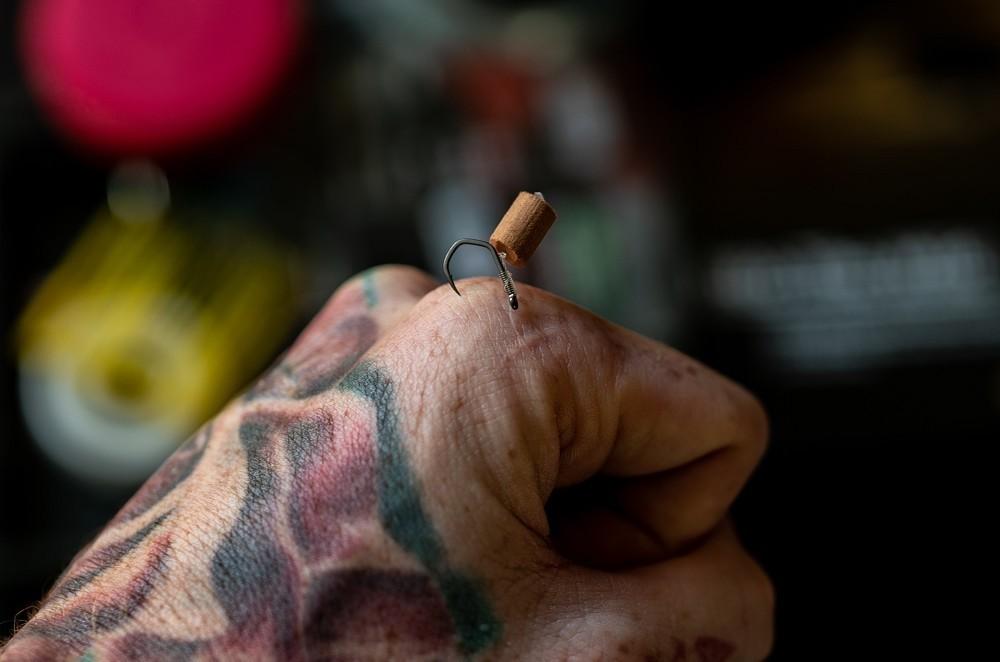
Hooks with a straight eye are better suited to zig rig fishing
In this vein, there are even aligners available that, not only keep the hook link in alignment, but provide a convenient band in which to insert your foam hook bait. They are available in myriad colours and offer a convenient way to set up the hooking arrangement assuming you are using foam, the most popular hook bait for Zig Rigs. This is supplied in cylindrical stick form, which can be cut to size. Again it comes in a multitude of colours from the brightest red, yellow and white, to the plainest black and dullest brown. You can stay with one colour or use a blend of two or more to try and elicit a response. Probably the most consistent colour to use is black and this makes the most logical starting point. Changing to brighter options, either in isolation or in combination with black, is a good alternative if bites aren’t forthcoming.
Which hook bait to use with a Zig Rig? Foam, imitation bugs or pop-ups?
Foam makes for a very convenient Zig hookbait as, not only is it very effective, it is also extremely buoyant, enabling tiny pieces to be presented. As it does not take on water it maintains consistent buoyancy throughout the time it is in the water and does a reasonable job of looking like an insect. You can also purchase buoyant, imitation bugs that look even more realistic. Whilst it might not be necessary, they certainly won’t do your confidence any harm.

Zig bugs can be very effective
Another popular Zig hookbait comes in slightly more traditional form, from bait companies. Tiny, sweet-tasting, over-flavoured, pop-ups are a good alternative to foam. It can be difficult to maintain confidence in a flavourless nugget of foam sat alone in midwater. Using something that looks similar but is pumping out food signals makes it easier to keep the faith. Again there are different colours and combinations that can be used and these little, barrel-shaped tempters will fit perfectly into the purpose-made aligners.
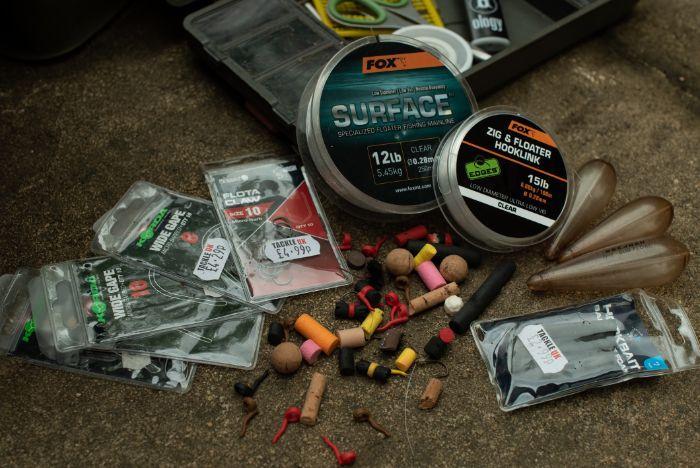
Experiment with different flavours and colour baits
Zig Rig line aligners or straight off the hair?
If you elect to use a built-in aligner system then the bait is going to be very tight to the hook in the perfect position. When utilising a hair it is similarly desirable to keep the hook bait fairly tight to the shank to maximise hooking potential, just as when mixer fishing. In fact, some exponents cut a slit in their foam to enable it to sit astride the shank, disguising the hook’s outline. Ideally, when using a conventional mounting the hair should come away from the hook opposite the point or even a touch closer to the eye and a couple of millimetres of silicone tube will help position it precisely.
Which hooklink material to use with a Zig Rig?
As well as a lightweight hook, our hooklink material for zig rigs must be light as well. Whilst fluorocarbon might have advantages, in terms of being less visible, its weight works against it and nylon is the best option. Most terminal tackle manufactures sell a dedicated line for floater and Zig fishing. Typically, they are made from thin monofilament and some are pre-stretched offering increased strength for a given diameter. This comes at a price though and both abrasion and shock resistance are somewhat reduced. The increased length of our Zig Rigs compensates for the latter by introducing some shock-absorbing elasticity whilst the line’s inability to stand up to obstructions and snags must be mitigated by sensible use. Zig Rigs simply aren’t for hit-and-hold or snaggy, demanding situations and are best kept for use in clear, open water.
Strength/diameter will depend on the angling scenario, taking into consideration weed, fish size, depth, snags etc but generally the hook link material is going to be much thinner and more delicate than we normally use for carp angling. Diameter is the more accurate guide to suitability so go by that rather than breaking strain. As a guide, we are likely to be using a mono in the region of 0.25mm to 0.30mm diameter (10lb to 15lb) with 12lb, 0.28mm suitable for most open water situations.
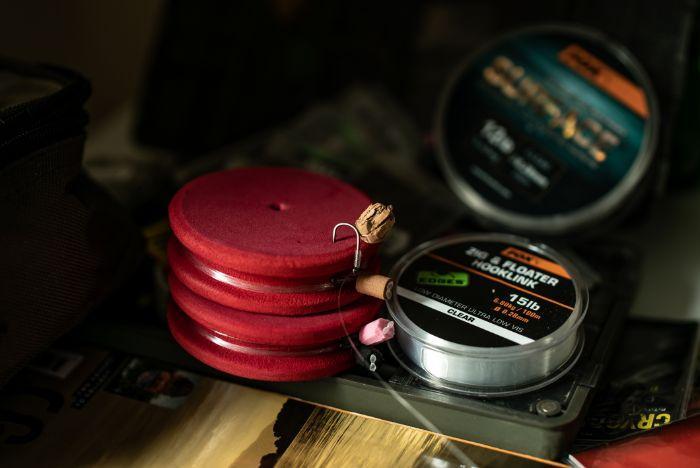
Use a clear monofilament line with a low diameter
What depth to fish a Zig Rig at?
Unless we are using an adjustable Zig set-up, which we’ll come to in a bit, the length of the hook link is going to determine the depth at which the hook bait sits. Accepted wisdom suggests starting at two-thirds depth (ie 8ft hook lengths in 12ft of water) to present the bait a third down from the surface. Changing depth throughout the day to find the level at which carp are sitting is a common tactic so it’s worth having several tied up in a variety of lengths and using fig. 8 loop knot and a quick-change swivel to facilitate easy switching. Long hook links are always going to be somewhat tangle-prone and an anti-tangle sleeve will go some way to reducing them whilst covering the quick-change attachment and keeping the loop secure.
What lead to use with a Zig Rig and how should it be set up?
There is, realistically, only one choice when it comes to lead attachment when Zigging and that’s a lead clip. Big leads provide a necessary aid to hooking and help when trying to cast unwieldy extended hook links. They are, however, a liability, whilst trying to play a hooked carp on such lengthy rigs. Unless they can come off they will bounce around, putting all sorts of stress on the hook hold, and might well wiggle the small hook out. They’ll make a mockery of any attempt to play a carp smoothly and gently to protect the fine hook link and generally make the whole process a heart-stopping, frantic and desperate affair. No, it’s far better that the lead is ejected straight away, as soon as the fish is hooked, to improve the chance of a successful conclusion.
Above the lead, there is absolutely no point in using anything additional. Tubing, lead core, lead-free or fused leaders are all made redundant by the length of the Zig Rig so just tie the main line direct to the quick-change swivel that sits inside the lead clip. The only thing to add is a lightly pushed-on tail rubber that will release the lead as soon as required.
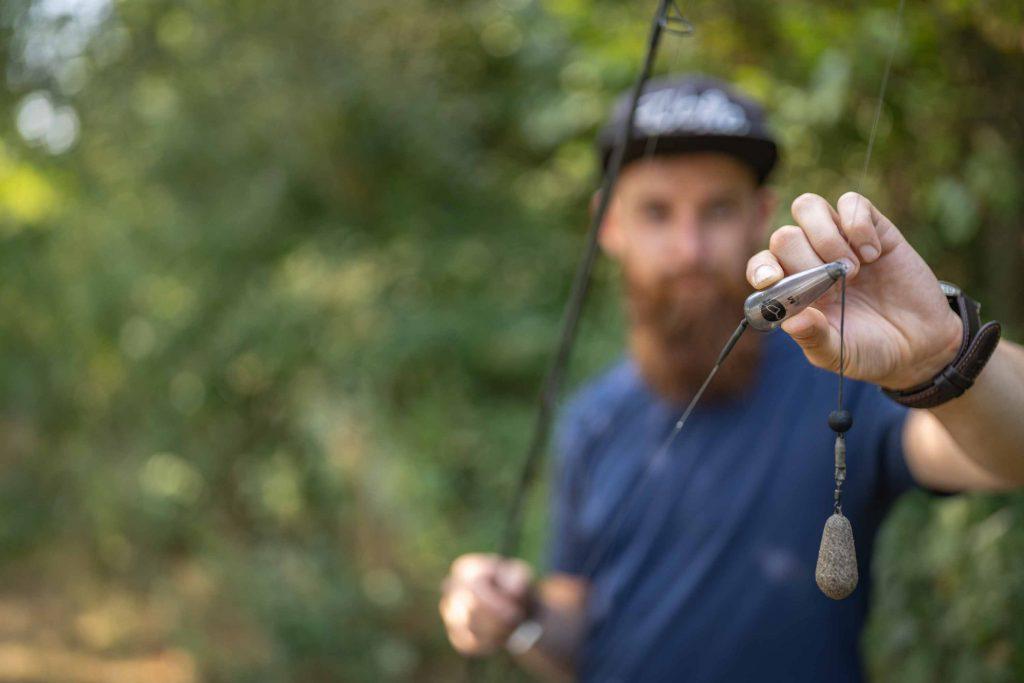
A big lead well ensure a good hook hold
What is an adjustable Zig Rig?
Ok, so in theory, we can use a Zig Rigs up to the depth of the water being fished but what happens in really deep water when the rig needs to be longer than the rod? This is where the adjustable Zigs we mentioned earlier come into play. Their use isn’t restricted to deep water as their adjustable nature is useful, making it possible for the angler to search different depths without having to recast.
Although the hooking arrangement is identical the adjustable Zig is set up differently. Thankfully these are normally purchased in a full kit with all the necessary bits and pieces. The hook link is a fixed length of around 2ft to 3ft and the swivel, instead of pulling into a lead clip, sits inside an inline float. Back from that there is a running lead, which is attached to a short boom to keep the running part off the bottom and away from weed and detritus that could foul it. Think of it like a marker float set up with a rig on the end and it’s easy to envisage. The lead will remain in place during the fight although, with a shorter hook link, it should not too troublesome.
In practice, it is a simple matter of pulling the line tight to bring the rig down to its lowest point before paying line off the reel until the desired point in the water column is reached as the float rises. Further adjustments can be made by reeling in or paying out the required amount of line.
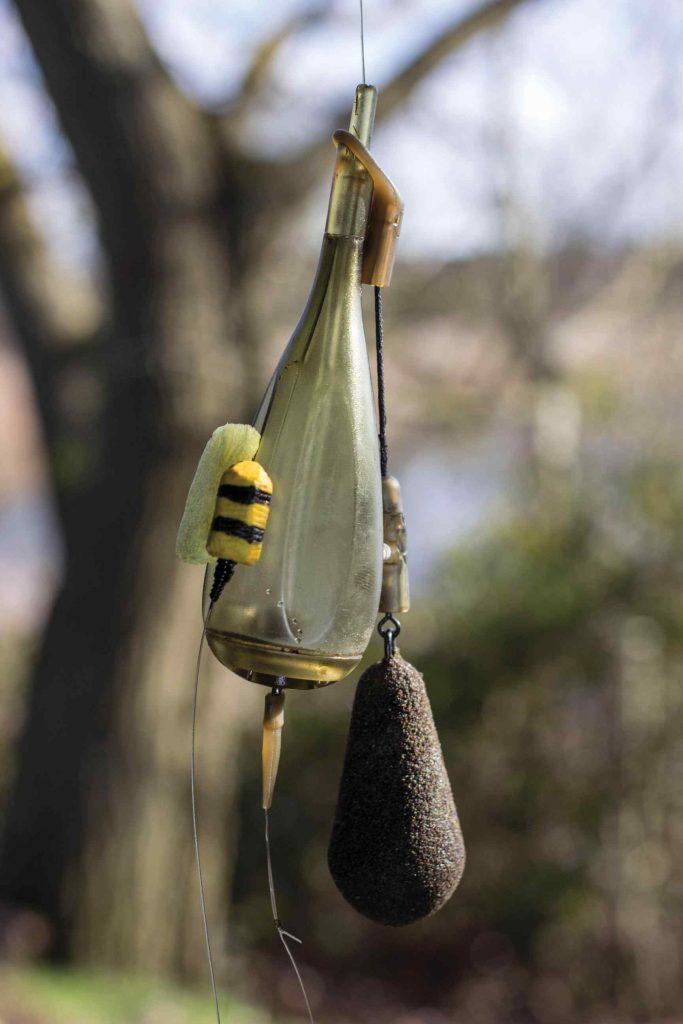
The adjustable zig rig is perfect for fishing deep lakes
That’s pretty much all you need to know to set up an effective Zig Rig to explore the untouched section of the water column and catch yourself some mid-water carp.